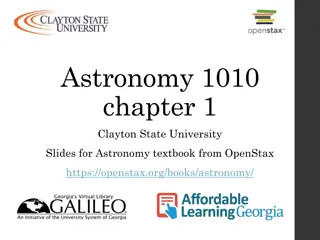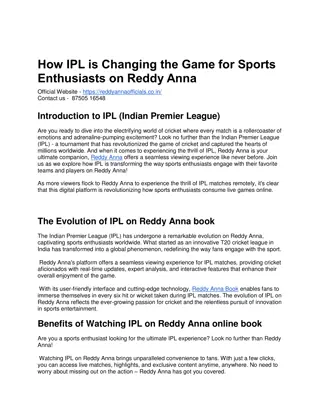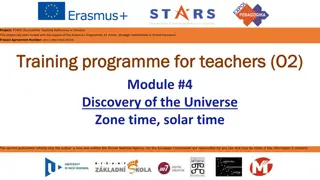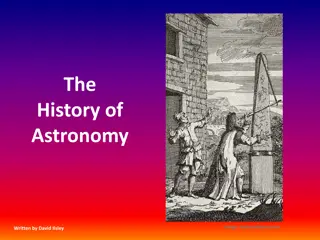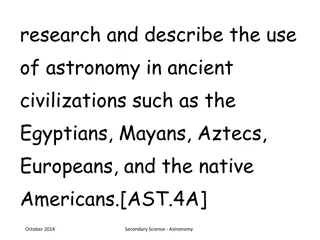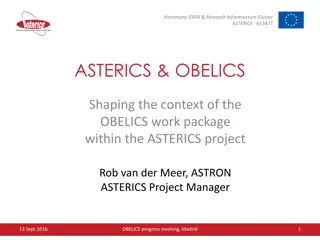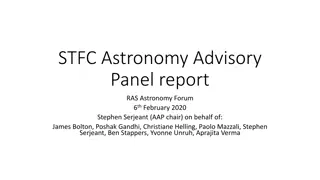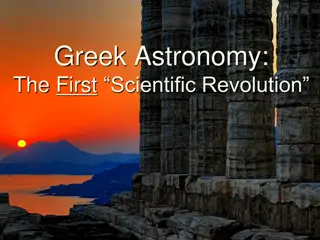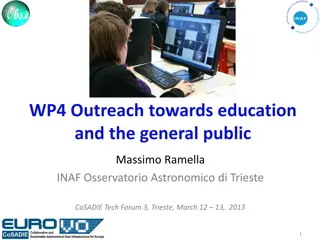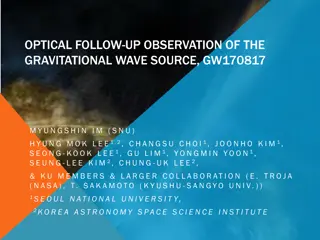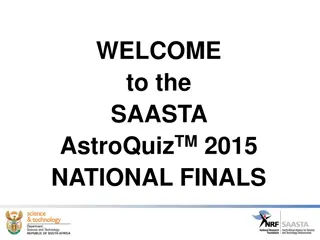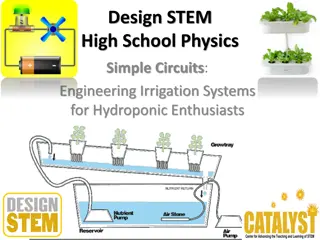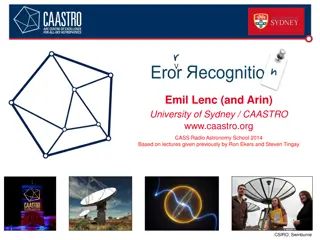Guide to Binoculars for Astronomy Enthusiasts
Explore the world of binoculars for astronomy with details on types, specifications, and recommended models like Vixen Ascott 10x50 SW. Learn about the advantages of binocular viewing, optimal magnifications, and how to enhance your stargazing experience. Discover the wonders of the night sky through binoculars, from constellations to deep-sky objects, planets, and more.
Download Presentation

Please find below an Image/Link to download the presentation.
The content on the website is provided AS IS for your information and personal use only. It may not be sold, licensed, or shared on other websites without obtaining consent from the author.If you encounter any issues during the download, it is possible that the publisher has removed the file from their server.
You are allowed to download the files provided on this website for personal or commercial use, subject to the condition that they are used lawfully. All files are the property of their respective owners.
The content on the website is provided AS IS for your information and personal use only. It may not be sold, licensed, or shared on other websites without obtaining consent from the author.
E N D
Presentation Transcript
Ken Anderson FAAC 3/19/2016
Binoculars Why Binoculars Natural two eye viewing (Sqrt 2 signal to noise brain multiplier) - Twice the aperture of monocular Wider true field of views than telescopes Smaller/More portable than larger telescopes Small ones are hand holdable Often 7x50 recommended My limit is 9x63 and 15x63 Orion Mini Giants (2.3lbs each), but monopod preferred for these higher powers. Cost Low Cost of Entry for small binoculars
Types of Binoculars Porro Straight through, smaller Roof Mounted standard (BAK-4 and BK7 both good coatings) Zoom Not recommended (narrower FOV) Image stabilized hand hold stabilization of moderate aperture and higher power but very costly
Binocular Specification Magnification x Aperture (mm) = Visibility Factor Magnification = Power Lower magnification yields wider area of sky Advantage of hand holdabilityat 10x and below Higher magnification yields greater detail but less sky Aperture = Light Gathering & Luminance Smaller is hand holdable but has darker skies, less stars/DSOs ~7x50 most common (7mm exit pupil) Larger may require monopod/tripod but has brighter skies, more stars/DSOs 50mm (or 63mm mini giants( typical limit of hand holdability)
Ultra Wide Low Power Gallileans (Constellation Viewing entire constellations!) Kasai/Blue Planet Optics 2.3x40mm 28 deg AFOV Very low eye relief & small eyepiece opening (not for eyeglass wearers!) the closer you can get your eye the wider the view. Optional filter holders & hands free headset Vixen 2.1x42mm Very low eye relief & larger eyepiece opening (easier daytime/meteor shower viewing) the closer you can get your eye the wider the view. What can you see? Pan Milkyway Able to Pleadies and Hyades in same view Able to see Orion s belt and sword in same view M32 lo0ks like sky chart with guide stars Often multiple planets in same view Great for fireworks, sporting events, theater/concerts, kid events!!!!
Vixen Ascott 10x50 SW 10x50 8.5 deg AFOV 5mm exit pupil Lenses and mirrors to get wide view Hand holdable (but less shake and able to see more detail when on monopod) Able to lay down or sit in zero gravity lawn chair and look at zenith! What can you see? Entire Hyades! Pleadiesor Beehive Star Clusters look good. Belt of Orion Sword of Orion with M42 visible Multiple DSOs in same view (M81/M82, comets, planets)
Orion Mini-Giants & Garrett Pistol Grip Monopod (limit of hand holdability) 9x63 5.0 deg AFOV 7mm exit pupil, 20mm eye relief Only 2.3 lbs. Hand holdable (but less shake and able to see more detail when on monopod) 15x63 3.7 deg AFOV 4.5mm exit pupil, 29mm eye relief Only 2.3 lbs. Marginably holdable (much less shake and able to see much more detail when on monopod!) Able to lay down or sit in zero gravity lawn chair and look at zenith! What can you see? Pleadies or Beehive Star Clusters look great! Sword of Orion with M42 visible M81.M82 in same view Multiple DSOs in same view (M81/M82, comets, planets)
Large Binoculars Why Large Binoculars Natural two eye viewing (Sqrt 2 signal to noise brain multiplier) - Twice the aperture of monocular Large aperture enables you to see more and dimmer DSOs with greater detail. Wider true field of views than telescopes, but not as wide as smaller binoculars Smaller/More portable than larger telescopes, but not as portable as small hand holdable binos Disadvantage 70mm+ require tripods (extra setup/weight) Straight through limited to 70 deg azimuth (neck limit) but easy to aim 45/90 deg able to see zenith (90 deg azimuth) but harder to aim. Plus able to swap eyepieces (power, AFOV/TFOV) What can you see? M31 (two FOV from dark site Mauna Kea best view of M31 ever) Pleadies or Beehive Star Clusters look awsome (especially when planet or moon passes through! Sword of Orion with M42 visiblelooks awsome! M81.M82 in same view Multiple DSOs in same view (M81/M82, comets, planets) Sun Spots with great detail (white light solar filter needed)
25x100mm Appogee Straight Through Binos Straight through limited to 70 deg azimuth (neck limit) but easy to aim Fixed Eyepiece power 25x and 3.5deg TFOV (cloudy nights says less) Inexpensive/Light Weight camera tripod (cloudy nights recommends heavier/stiller/taller more expensive tripod for stability and less vibration Not able to point to zenith, and no space for head/neck space to do so (but neck limited to 70 deg anyway). More difficult to mount bino on tripod (than Versa Go mount L bracket)
FAAC Orion 100mm Right Angle Binos FAAC Orion 100mm Right Angle Binos 90 deg able to see zenith (90 deg azimuth) plus able to swap eyepieces (power, AFOV/TFOV) 22x Orion straight barrel came w/ binos able to tighten w/o issue (used w/ public) 24mm 68 AFOV TV Panoptic (widest view) indented barrel (personal, previous FAAC member got indented barrel stuck!) 20mm, 15mm, & 9mm 66 AFOV Orion Expanse indented barrel Orion Vixen Versa Go Alt Azimuth Mount Able to point to zenith and offset angle allow head/neck space to do so L bracket easy to install on upside down binos L bracket/bino east to install on Versa Go mount Effective Aperture a little above 80mm (ref cloudy nights) Red dot finder recommended to assist in aiming
Denk II Binoviewers Advantages Able to use two eyes with your telescope! More natural two eye viewing with SQRT 2 signal to noise multiplier More Detail on brighter DSOs and planets, or Moon. Power switches and OCSs enable multiples powers and FOV with single pair of eyepieces (no need to buy multiple pairs of eyepieces!) Disadvantage Half the aperture per eye (may not see dimmer DSOs) Narrower TFOV than original telescope (& pure binoculars) Some people have issues merging images in both eyes (therefore try before buy)
Denkmeier LOA 21 3D eyepieces 3D viewing in binoviewers or 45/90 deg binos that accept removable eyepieces One eyepiece has 5 square arrays (center, up down, left, right) plus nominal for 6 distinct depths. Indentations on that eyepiece can place center array either at closest or furthest appeared distances. Artificial 3D depth for DSOs and background stars (no correlation to real distances) Option to buy 3rd2D eyepiece for planets, moon, sun (doubt anyone would want to look at DSOs in 2D when 3D is available) P.S. Denk will soon be offering 3D hand held binos for Milkyway, Small Constellations, Hyades, Perseus A, M45, M44, M31, M42, M8, M13, etc.
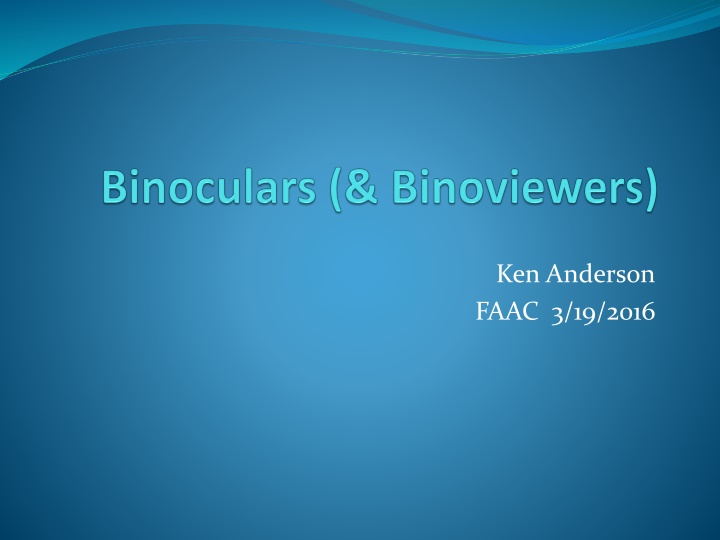

![READ⚡[PDF]✔ The Earth in Context: A Guide to the Solar System (Springer-Praxis S](/thumb/21508/read-pdf-the-earth-in-context-a-guide-to-the-solar-system-springer-praxis-s.jpg)

